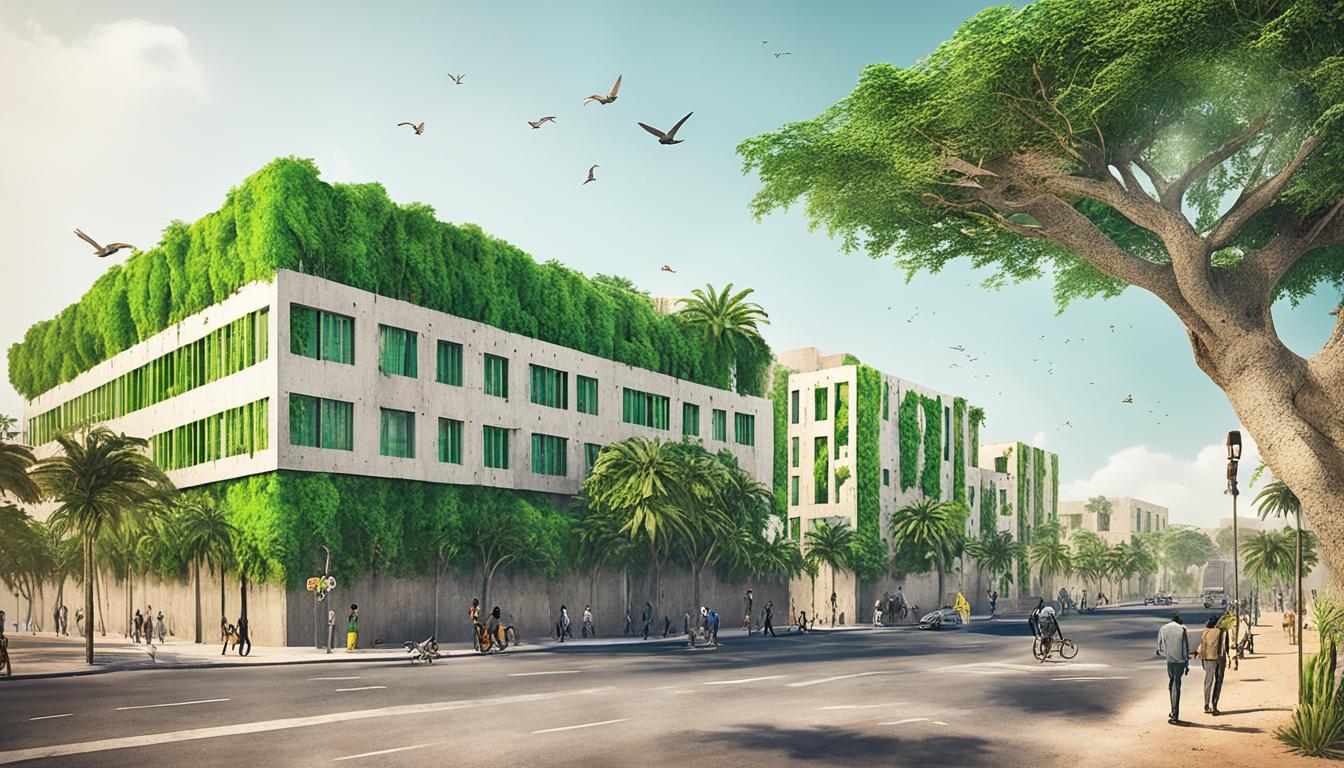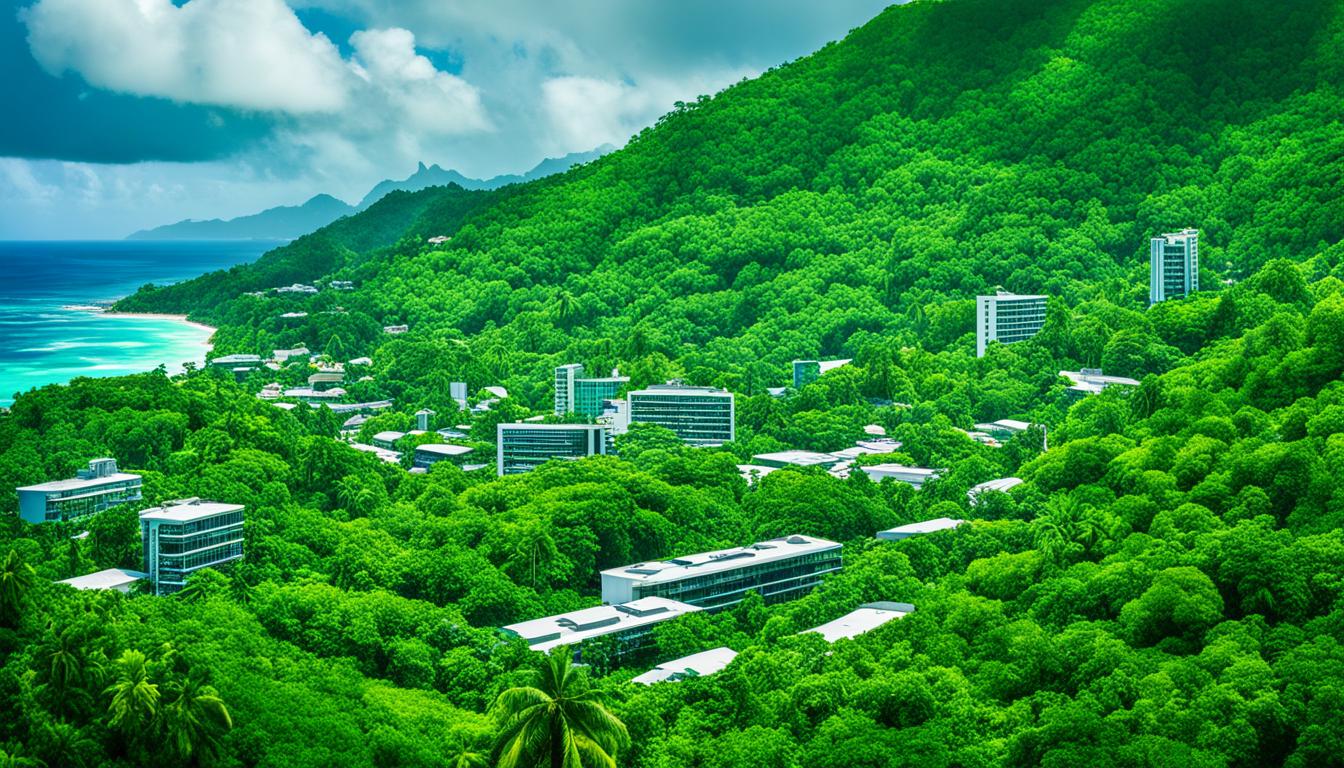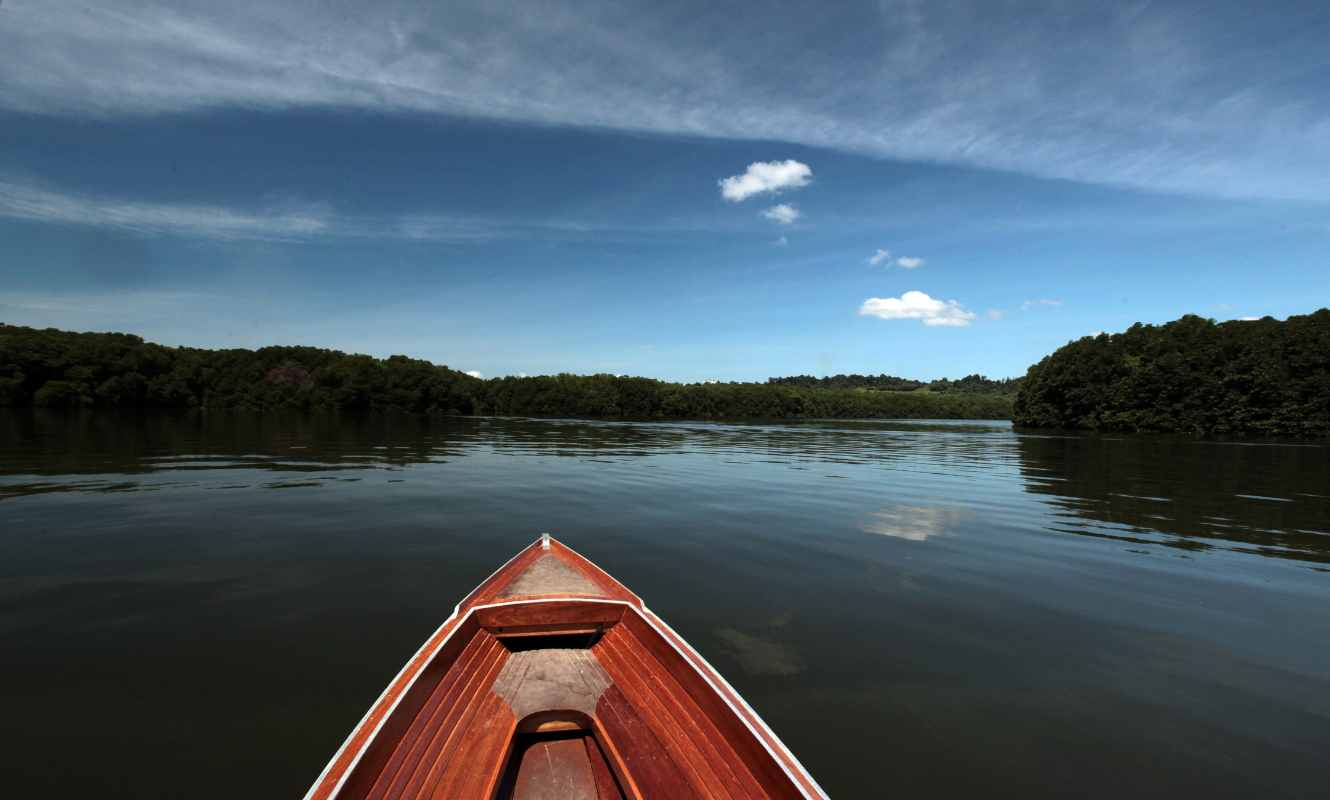Serbia Biodiversity and the Built Environment
Serbia is home to a remarkable biodiversity, with 4,082 known species of plants and animals. However, this biodiversity is under threat due to factors like climate change, habitat loss, and pollution. Conservation efforts are essential for protecting endangered species and preserving Serbia’s rich biodiversity. Implementing sustainable development practices and addressing climate change impacts are crucial for safeguarding the country’s natural heritage.
Key Takeaways
- Serbia’s biodiversity is diverse and extensive, with over 4,000 known species.
- Conservation efforts are essential for protecting endangered species and preserving Serbia’s biodiversity.
- Sustainable development practices and addressing climate change are crucial for the country’s natural heritage.
- Preserving habitats and implementing conservation measures is crucial for the long-term sustainability of Serbia’s biodiversity.
- Collaboration between government, nonprofit organizations, and communities is vital for successful conservation efforts.
Continue reading to explore Serbia’s rich flora and fauna, the threats facing its biodiversity, conservation efforts, and the role of the built environment in protecting and enhancing Serbia’s natural heritage.
Serbia’s Rich Biodiversity: A Closer Look at Flora and Fauna
Serbia boasts a diverse range of plant and animal species, highlighting the country’s remarkable biodiversity within its landscapes. With 600 plant species, the flora in Serbia showcases a wide variety of plants, adding vibrancy and beauty to its natural environment.
The fauna of Serbia is equally impressive, with 96 mammal species, 238 breeding bird species, 35 reptile species, 10 amphibian species, and 125 fish species inhabiting the region. This rich diversity of animal species contributes to the unique ecological balance and ecosystem functions of Serbia.
However, the survival of several animal species is currently under threat, facing various challenges and endangerment due to factors such as habitat loss and human activities. Preserving their habitats and implementing effective conservation measures is crucial for ensuring the long-term sustainability of Serbia’s biodiversity and safeguarding these valuable species for future generations.
To gain a better understanding of Serbia’s diverse plant and animal life, the following table provides a summary of the different species groups:
| Group | No. of Species |
|---|---|
| Plants | 600 |
| Mammals | 96 |
| Breeding Birds | 238 |
| Reptiles | 35 |
| Amphibians | 10 |
| Fish | 125 |
This incredible biodiversity provides a unique opportunity for scientific research, ecological conservation, and nature tourism in Serbia. By valuing and protecting the diverse flora and fauna, Serbia can not only maintain its natural heritage but also promote sustainable development in harmony with its rich environment.
Threats to Biodiversity: The Challenges Facing Serbia’s Ecosystem
Serbia’s rich biodiversity is facing numerous challenges that threaten its delicate ecosystem. These threats include habitat loss due to agriculture expansion and drainage of swamps, the introduction of invasive species that disrupt native ecosystems, illegal forest cutting and uncontrolled grazing, and the recurring threat of forest fires.
Habitat loss is a significant concern in Serbia, as the expansion of agriculture and the drainage of swamps are causing the destruction and fragmentation of natural habitats. This loss of habitat directly impacts the survival of many plant and animal species, driving declines in their populations.
Invasive species are another threat to Serbia’s biodiversity. The introduction of non-native species can disrupt the delicate balance of native ecosystems, outcompeting local species for resources and leading to population declines and habitat degradation.
Illegal forest cutting and uncontrolled grazing are contributing to habitat degradation in Serbia. These activities result in the destruction of vital forest habitats and the loss of crucial food sources for many species.
Forest fires pose a recurring threat to Serbia’s biodiversity. Uncontrolled fires can devastate large areas of natural habitat, leading to the loss of countless plant and animal species.
To protect Serbia’s biodiversity, it is crucial to address these threats. Stricter regulations are needed to control activities that contribute to habitat loss, such as agriculture expansion and wetland drainage. Implementing sustainable land use practices will help minimize habitat destruction and degradation.
Managing and preventing the introduction of invasive species is essential. This involves implementing rigorous monitoring and control measures to prevent the establishment and spread of non-native species.
Addressing illegal forest cutting and uncontrolled grazing requires effective enforcement and penalties for those involved in these activities. Promoting sustainable forestry practices and responsible land management can help restore and protect natural habitats.
Furthermore, implementing comprehensive fire management strategies is crucial to prevent and mitigate the devastating impacts of forest fires.
By taking proactive measures to combat these threats, Serbia can ensure the long-term survival and flourishing of its diverse flora and fauna.
Threats to Serbia’s Biodiversity:
- Habitat loss due to agriculture expansion and drainage of swamps
- Introduction of invasive species
- Illegal forest cutting and uncontrolled grazing
- Recurring threat of forest fires
Climate Change and its Impact on Serbia’s Biodiversity
Climate change poses significant threats to Serbia’s biodiversity and the built environment. The changing climate triggers phenological changes, altering the timing of essential life cycle events for plant and animal species. These disruptions can have severe consequences for the natural cycles of life and result in population declines and the potential extinction of vulnerable species.
One of the primary impacts of climate change is habitat loss. Rising temperatures and changing precipitation patterns can lead to the degradation and destruction of critical habitats, making it challenging for species to survive and thrive. As habitats shrink, species are forced to compete for limited resources and struggle to find suitable conditions for breeding and feeding.
Vulnerable species are particularly at risk. They may have specific habitat requirements or narrow temperature tolerances that leave them more susceptible to the impacts of climate change. Without targeted conservation efforts, these species face a high risk of decline and potential extinction.
To safeguard Serbia’s biodiversity in the face of climate change, it is crucial to protect vulnerable species and develop adaptation strategies. Conservation initiatives should focus on preserving and restoring habitats, implementing sustainable land and resource management practices, and promoting habitat corridors that connect fragmented landscapes.
“The challenges presented by climate change require innovative solutions and collaboration between scientists, policymakers, and local communities. By working together, we can mitigate the impacts of climate change and ensure the long-term survival of Serbia’s unique biodiversity.” – Dr. Ana Petrović, Environmental Scientist
The Role of Phenological Changes
Phenological changes associated with climate change affect the timing of essential events in the life cycle of plants and animals. For example, the onset of spring may occur earlier, leading to plants blooming sooner. These shifts can disrupt the intricate relationships between species that rely on specific timing for pollination, reproduction, and other crucial processes. As a result, ecosystems may become imbalanced, with potential cascading effects on the entire ecosystem.
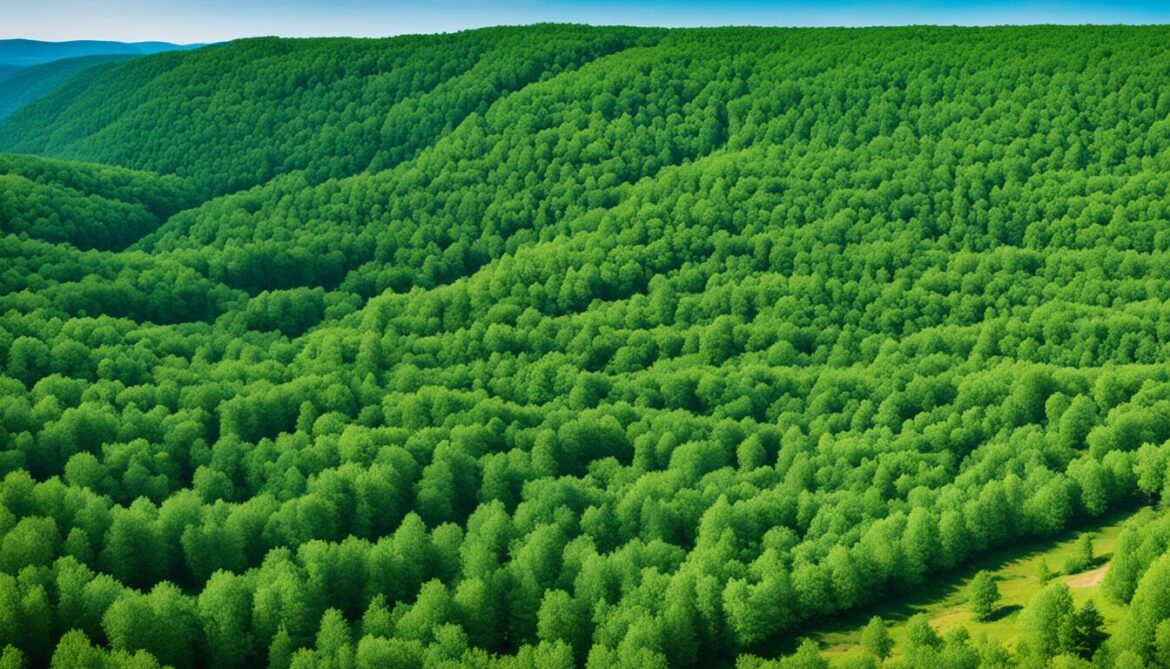
Adaptation Strategies for Serbia’s Biodiversity
Developing adaptation strategies is vital to help Serbia’s biodiversity cope with the impacts of climate change. By identifying vulnerable species and their specific habitat requirements, conservation efforts can be targeted towards preserving and restoring their habitats. Additionally, integrating climate change considerations into land management practices, such as sustainable forestry and agriculture, can help mitigate further habitat loss.
| Adaptation Strategies | Benefits |
|---|---|
| Establishing protected areas | Preserves critical habitats and provides safe spaces for vulnerable species |
| Promoting ecosystem restoration | Reverses habitat degradation and supports the recovery of biodiversity |
| Enhancing connectivity through habitat corridors | Allows for species movement and gene flow, reducing the risk of isolation |
| Implementing sustainable land and resource management practices | Reduces habitat loss and ensures responsible use of natural resources |
By implementing these adaptation strategies, Serbia can enhance the resilience of its biodiversity, allowing species to withstand the challenges posed by climate change and ensuring the long-term survival of its unique flora and fauna.
Conservation Efforts: Protecting Endangered Species in Serbia
Serbia’s rich biodiversity is home to a diverse range of species, including several that are currently threatened. These species, which include mammals, birds, reptiles, fish, and endangered plant species, require urgent conservation efforts to ensure their survival. Protecting these species goes beyond simply preserving their habitats; it also involves developing adaptation strategies to address the impacts of climate change, creating protected areas, establishing migration corridors, and promoting sustainable land and resource management practices.
One of the key challenges in conserving endangered species is mitigating the effects of climate change. Rising temperatures, changing rainfall patterns, and other climate-related factors can have severe consequences for species that are already vulnerable. Implementing adaptation strategies that take into account these changes is crucial for increasing the resilience of both the species and their habitats in Serbia.
To safeguard Serbia’s biodiversity, protected areas play a crucial role. These designated regions serve as sanctuaries where threatened species can flourish under special conservation measures. By establishing and effectively managing these protected areas, Serbia can provide a safe haven for endangered species and support their recovery. Additionally, the creation of migration corridors allows for the movement of species between fragmented habitats, ensuring their genetic diversity and long-term survival.
Sustainable land and resource management practices are also vital for the conservation of endangered species in Serbia. These practices minimize habitat degradation, protect natural resources, and promote the coexistence of human activities with biodiversity. By fostering collaboration between governments, nonprofit organizations, and local communities, Serbia can implement these practices on a broader scale and ensure the successful conservation of its diverse range of species.
It is important to recognize that protecting endangered species is not only a responsibility but also an opportunity. By safeguarding Serbia’s biodiversity, we are preserving the natural heritage of the country for future generations to enjoy. Moreover, conserving endangered species contributes to the overall health and balance of ecosystems, providing essential services such as pollination and pest control.
“The conservation of endangered species is not just about preserving individual species; it’s about protecting the intricate web of life that sustains us all.” – Dr. Jane Goodall
By prioritizing conservation efforts, developing adaptation strategies, creating protected areas, and promoting sustainable land and resource management practices, Serbia can make significant progress in protecting its endangered species and preserving its unique biodiversity.
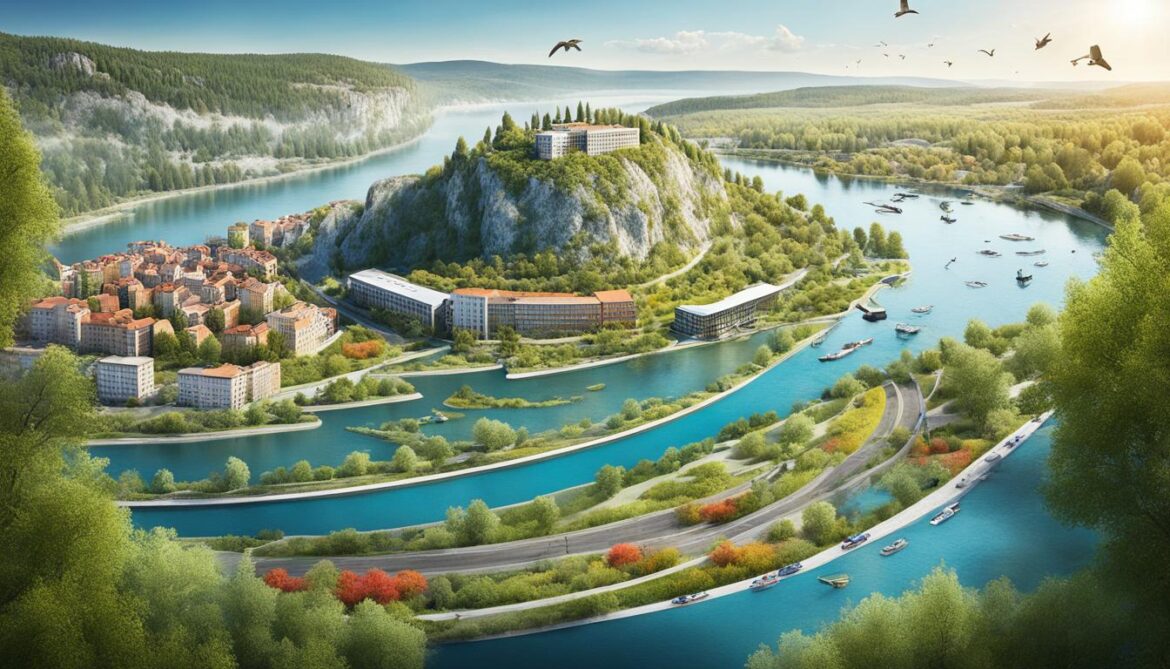
Conservation Efforts: Key Initiatives
| Initiative | Description |
|---|---|
| Protected Areas | Establishing and effectively managing designated regions to provide safe habitats for endangered species. |
| Adaptation Strategies | Developing plans to address climate change impacts on species and their habitats. |
| Sustainable Land Management | Promoting practices that minimize habitat degradation and protect natural resources. |
| Collaboration | Fostering partnerships between governments, nonprofit organizations, and local communities to implement conservation measures. |
Biodiversity Net Gain: Enhancing Biodiversity in the Built Environment
The construction industry plays a crucial role in enhancing biodiversity in the built environment. Through measures like biodiversity net gain, the industry can limit the impacts of construction projects on biodiversity while creating more potential habitats for animals and plants to thrive.
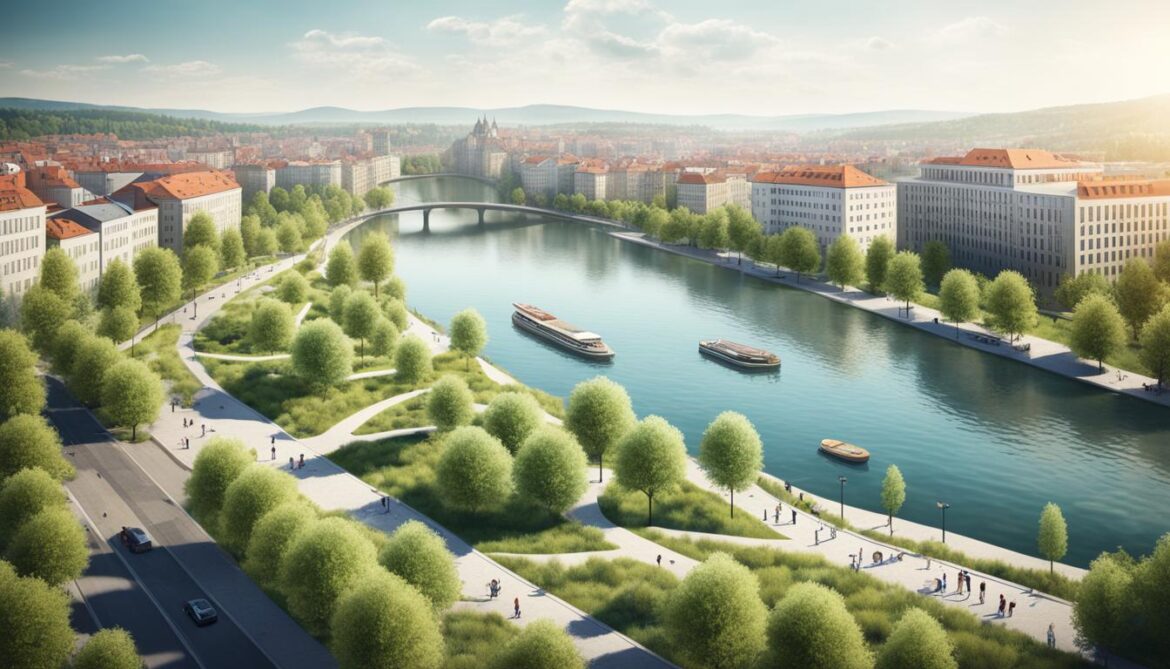
Biodiversity net gain is a process that ensures new developments result in a net gain in biodiversity compared to the previous state. By requiring new construction projects to create more habitats, this approach aids in protecting existing habitats and decreasing biodiversity loss.
The introduction of mandatory biodiversity net gain regulations for new construction developments will also provide more green spaces for communities to enjoy. These green spaces contribute to the overall well-being of residents, providing opportunities for recreation, relaxation, and connection with nature.
The construction industry has the potential to be a catalyst for positive change in enhancing biodiversity within the built environment. By incorporating measures like biodiversity net gain into construction practices, we can ensure that urban areas not only accommodate human needs but also support thriving ecosystems.
Benefits of Biodiversity Net Gain in Construction
Implementing biodiversity net gain brings several benefits to both the environment and local communities:
- Enhanced habitat quality and quantity
- Preservation of native plant and animal species
- Improved air and water quality
- Reduced urban heat island effect
- Increased opportunities for nature-based recreation and education
- Enhanced aesthetic appeal of urban areas
Biodiversity Net Gain in Practice
Biodiversity net gain is achieved through various strategies and practices, such as:
- Creating green roofs and walls on buildings
- Integrating wildlife-friendly features, such as bird boxes and bat roosts, into construction designs
- Establishing ecological corridors to connect fragmented habitats
- Restoring and enhancing existing green spaces and natural areas
- Using sustainable construction materials and techniques
Example: Biodiversity Net Gain Calculation
To illustrate the concept of biodiversity net gain, let’s consider a hypothetical construction project:
| Component | Pre-Development Area (m²) | Post-Development Area (m²) |
|---|---|---|
| Habitat A | 1,000 | 1,200 |
| Habitat B | 500 | 800 |
| Habitat C | 800 | 900 |
In this example, the construction project has achieved a biodiversity net gain by creating larger habitats for each component compared to the pre-development state. The net gain can be calculated by subtracting the pre-development area from the post-development area.
The Role of the Built Environment in Raising Biodiversity Awareness
The built environment plays a crucial role in biodiversity conservation, offering opportunities to modify habitats and create green spaces that contribute to the preservation of Serbia’s precious flora and fauna. By developing public parks, implementing green walls and roofs, and utilizing existing space on buildings, we can provide refuge for displaced wildlife and contribute to the growth of urban ecosystems.
Raising awareness among industry stakeholders about the importance of biodiversity is essential for successful conservation efforts. By educating architects, developers, and construction companies about the positive impacts of habitat modification and the creation of green spaces, we can collectively contribute to the protection of Serbia’s rich biodiversity and the built environment.
Site-Specific Strategies for Managed Assets
Developing site-specific strategies for managed assets is crucial in maximizing the potential for biodiversity conservation. By carefully considering the unique characteristics of each site, such as its location, topography, and existing flora and fauna, we can design and implement conservation measures that are tailored to the specific needs of the area.
Rather than applying a one-size-fits-all approach, site-specific strategies allow us to take into account the specific ecological requirements of the site, ensuring that our conservation efforts are targeted and effective.
Collecting Biodiversity Data and Reporting to Local Authorities
Collecting accurate and up-to-date biodiversity data is vital for monitoring the health of ecosystems and identifying potential areas for conservation intervention. By conducting thorough surveys and assessments of flora and fauna populations, we can gain valuable insights into the current state of biodiversity in Serbia’s built environment.
To support conservation efforts and promote transparency, it is important to report biodiversity data to local authorities. This information can help shape policies and inform decision-making processes that impact the built environment, ensuring that sustainable practices are prioritized and biodiversity conservation remains a key focus.
Building a Greener Future, One Awareness at a Time
Raising awareness about the importance of biodiversity conservation among the general public is crucial for fostering a culture of environmental stewardship. By promoting the benefits of green spaces, highlighting the interconnectedness between humans and nature, and showcasing the beauty and value of Serbia’s biodiversity, we can inspire individuals to take action and support conservation efforts.

Through collaborative efforts between government agencies, nonprofit organizations, and local communities, we can create opportunities for engagement, education, and active participation in biodiversity conservation initiatives. By coming together and recognizing the role that the built environment plays in raising biodiversity awareness, we can build a greener future for Serbia, where biodiversity and the built environment coexist in harmony.
Serbia’s Transition Towards a Sustainable Future
Serbia has embarked on an inspiring journey towards a sustainable future, implementing various transition initiatives that encompass multiple sectors. These initiatives are aimed at aligning practices with sustainability principles, minimizing environmental impacts, and fostering inclusivity within the country.
Sustainable Food Systems
One of Serbia’s key transition initiatives focuses on establishing sustainable food systems. By promoting organic farming practices, supporting local farmers, and enhancing food accessibility, Serbia aims to ensure a resilient and environmentally friendly food production and distribution system.
Transforming Education Systems
Recognizing the vital role of education in driving sustainable development, Serbia is actively transforming its education systems. By integrating sustainability education into curriculums and promoting environmental awareness, Serbia seeks to empower future generations with the knowledge and skills necessary for creating a sustainable society.
Digital Transformation
Embracing the power of technology, Serbia is undergoing a digital transformation that aims to optimize resource management, improve efficiency, and reduce environmental footprints. This digital revolution encompasses sectors such as agriculture, energy, and transportation, resulting in smarter, more sustainable practices.
The Energy Transition
The transition to clean and renewable energy sources is a paramount goal for Serbia. By diversifying its energy mix, investing in renewable technologies, and promoting energy efficiency, Serbia aims to reduce greenhouse gas emissions and enhance energy security while supporting sustainable economic growth.
To ensure the success of Serbia’s sustainable transition, intersectoral effectiveness, enhanced coordination, and stakeholder engagement are crucial. Collaboration between civil society, the private sector, and the government is key to driving sustainable development and achieving the Sustainable Development Goals established by the United Nations.
With its commitment to sustainability and the implementation of transition initiatives, Serbia has the potential to become a leading force in building a greener, more resilient future. By embracing sustainable actions and working together, Serbia can create a positive impact on the environment, society, and its rich biodiversity.
Future Opportunities and Challenges for Serbia’s Biodiversity
The UN Biodiversity Conference (COP15) provides a significant opportunity for Serbia to shape the future of its rich biodiversity. During this conference, action targets for 2030 will be set, focusing on crucial goals such as conserving land and sea areas, restoring degraded ecosystems, and assessing the dependencies and impacts of businesses on biodiversity.
The built environment plays a pivotal role in protecting and creating biodiversity, offering exciting opportunities for Serbia. Initiatives like habitat restoration and nature-based solutions can contribute to the preservation and enhancement of the country’s natural heritage.
However, along with these opportunities, challenges are also present. Discrimination towards certain species and habitats needs to be recognized and addressed. Additionally, raising awareness among communities, businesses, and policymakers is essential for fostering a culture of biodiversity conservation.
As Serbia moves forward, transforming laws and practices is crucial for promoting inclusivity and ensuring the protection of biodiversity. By actively participating in the UN Biodiversity Conference and implementing sustainable strategies, Serbia can pave the way for a more resilient future for its unique flora and fauna.
Key Takeaways:
- UN Biodiversity Conference (COP15) presents opportunities to define Serbia’s biodiversity future and set action targets for 2030.
- Conservation of land and sea areas, ecosystem restoration, and assessing business impacts are key conference goals.
- The built environment can play a vital role in protecting and creating biodiversity through habitat restoration and nature-based solutions.
- Challenges include addressing discrimination and raising awareness among communities and policymakers.
- Transforming laws and practices is crucial for promoting inclusivity and protecting biodiversity.
| Opportunities | Challenges |
|---|---|
| Conserving land and sea areas | Addressing discrimination towards certain species and habitats |
| Restoring degraded ecosystems | Raising awareness among communities and policymakers |
| Assessing businesses’ dependencies and impacts on biodiversity |
“The UN Biodiversity Conference provides an opportunity for Serbia to define its biodiversity future and address conservation challenges.” – [Your Name], Conservation Advocate
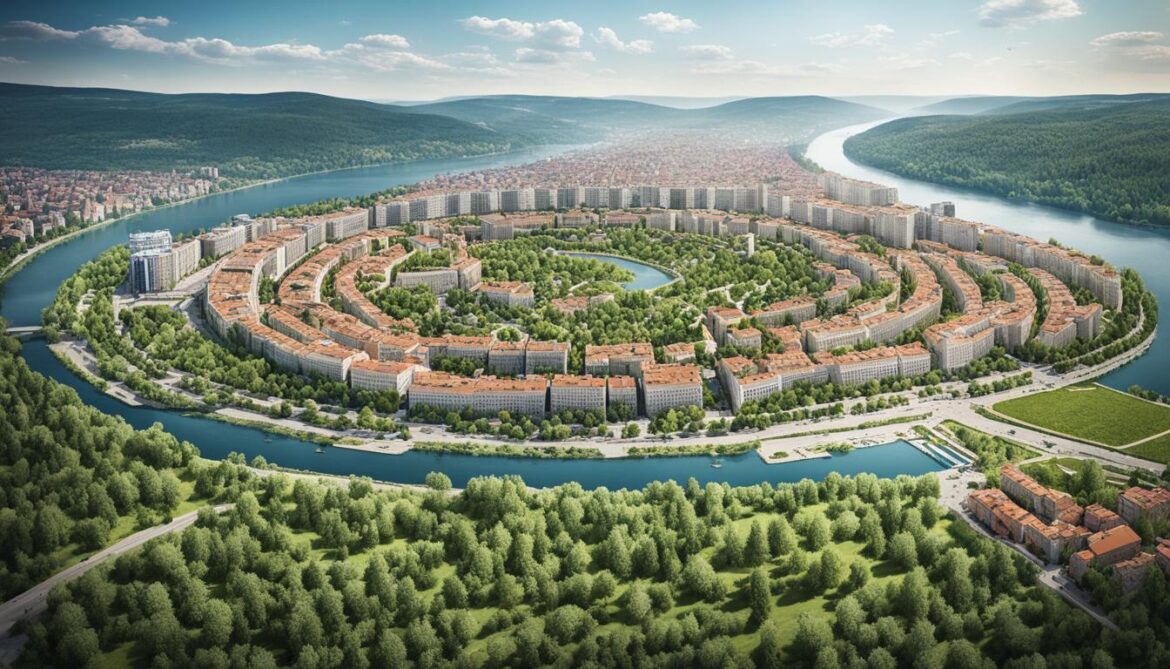
Conclusion
Serbia’s rich biodiversity and the built environment are intricately connected, presenting both opportunities and challenges for sustainable development. The conservation of biodiversity through dedicated efforts, such as addressing the impacts of climate change and implementing sustainable practices, is essential to preserve Serbia’s natural heritage. In this endeavor, the construction industry plays a crucial role by embracing measures like biodiversity net gain.
Serbia has the potential to become a leader in protecting and creating biodiversity, paving the way for a greener and more resilient future. However, it requires continued collaboration, awareness-raising, and conservation efforts to safeguard the country’s unique flora and fauna. By working together, governments, nonprofit organizations, and communities can ensure the preservation of Serbia’s natural treasures while promoting sustainable development.
In conclusion, the harmony between Serbia’s biodiversity and the built environment offers immense possibilities. By protecting and enhancing biodiversity, addressing climate change impacts, and promoting sustainable practices, Serbia can create a brighter future for all. Let us continue to collaborate and raise awareness to foster a greener and more resilient Serbia, preserving the country’s natural heritage for generations to come.




